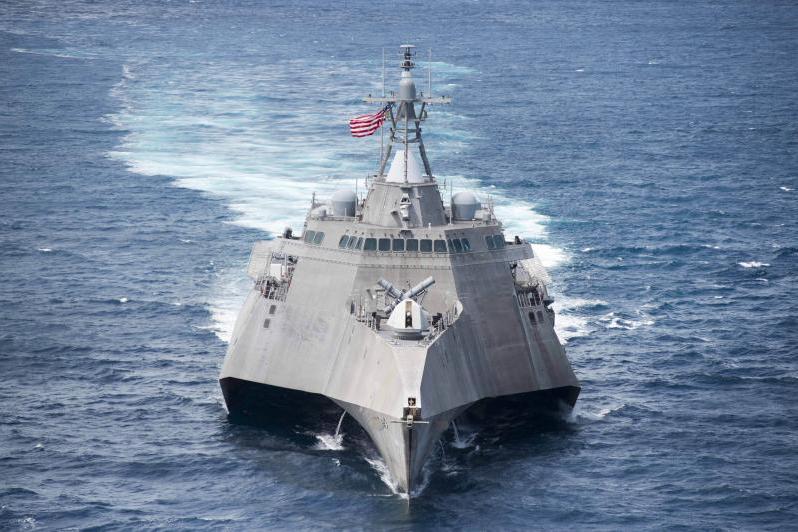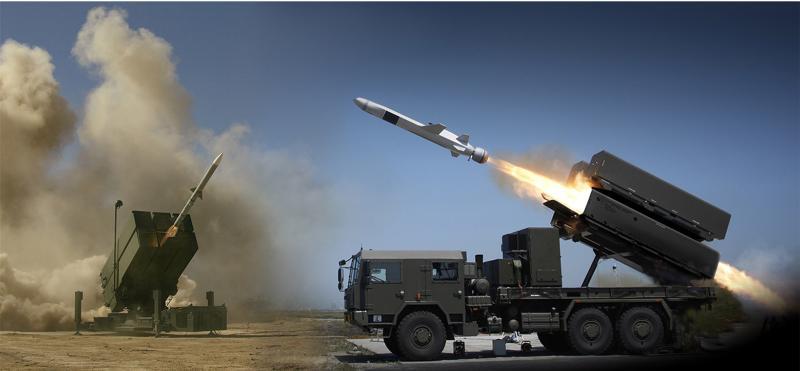Cyprus’s Thin Green Line
By Mr. David Oliver, Former Deputy Editor of CBNW
Almost 50 years since the island of Cyprus has been divided into the Republic of Cyprus and the Turkish Republic of Northern Cyprus. A demilitarized zone called the Green Line divides the two, a buffer zone, which, according to UN estimates, remains contaminated with over 7,000 mines.
In 1974, a Greek military coup, which aimed to unite the island with mainland Greece, led to a Turkish invasion and the division of the island between Turkish Northern Cyprus and the Greek Cypriot Republic of Cyprus. Cyprus remains divided to this day by what has become known as the Green Line.
The Green Line today in Cyprus is not simply a line drawn through Nicosia, but a buffer zone between two states, the Turkish Cypriot north and Greek Cypriot south. It is described as a demilitarized zone where its northern and southern limits are the lines where the belligerents stood following the ceasefire of 16 August 1974, as recorded by the United Nations Peacekeeping Force in Cyprus (UNFICYP). This zone including the Kokkina enclave is over 180 km long, is 7.4 km at its widest and 3.3 m at its narrowest point. The buffer zone is home to some 10,000 people and there are several villages and farms located within. UNFICYP is headquartered from the Blue Beret Camp next to the abandoned airport of Nicosia. The mission has a strength of 1,000, including British soldiers who serve on Operation Tosca, a six-month UN tour of duty during which they are responsible for maintaining the integrity of the Buffer Zone. The mission’s mandate was last renewed on the 30 January 2023 and extended until 31 January 2024.
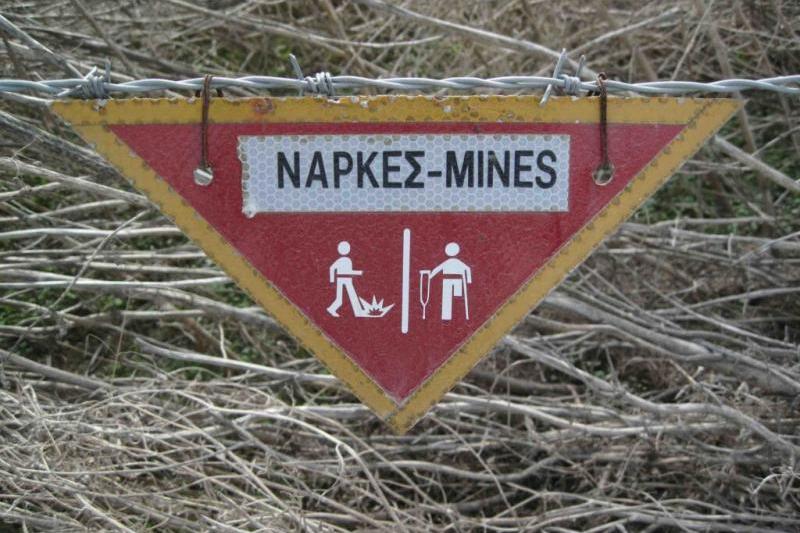
The UN Development Programme (UNDP) established the UN Mine Action Centre in Cyprus (UNMACC) with funding from the European Union in 2003. Preparations began for mine clearance activities in the buffer zone, supported by UNFICYP. G4S Ordnance Management, a leading organization working for environmental remediation of landmines and unexploded ordnance, had worked under the supervision of UNMACC since 2004 and completed its activities at the buffer zone excluding the four minefields that had not been opened to demining process. UN officials said three of the four minefields belonged to Greek Cypriots and one was under the control of the Turkish Cypriot side. Teams of G4S Ordnance Management had cleared the buffer zone of nearly 27,000 mines in six years. 18,000 were anti-personnel mines and 9,000 were anti-tank mines.
In July 2016, UNMAS became an integral component of UNFICYP, providing dedicated expertise in mine action planning and co-ordination, operational demining capacity, and data management of mine action information. The objectives of UNMAS in Cyprus operations are: to reduce the threat of landmines and explosive remnants of war (ERW); to contribute to confidence building measures; to facilitate a return to normal living conditions; and to ensure safer freedom of movement for UNFICYP, UN partners, and communities. UNMAS also provides assistance to the Committee on Missing Persons to facilitate safe access to areas it conducts activities in and technical guidance to UNFICYP for small arms ammunition storage.
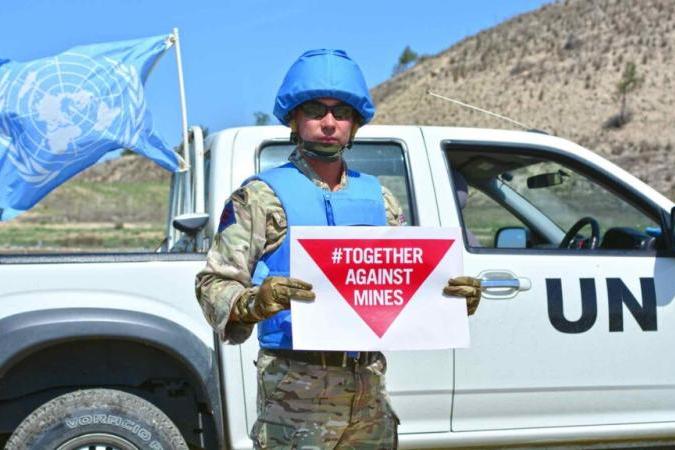
UNMAS assistance is focused on the removal of mines and ERW that create barriers between the two communities and threaten peace. Its operations contribute to confidence building measures and enable progress towards the implementation of a final settlement agreement.
UNFICYP data indicates that there are 47 suspected hazardous areas in Cyprus that may be contaminated with mines and/or ERW, amounting to approximately 1.7 million square meters of land. Each area requires survey to determine the need for clearance. To prepare for future surveys and clearance, UNMAS conducts planning and coordination; data analysis and management of information on minefields and suspected hazardous areas; and conducts assessments. The activities help ensure that survey and clearance can get underway to release safe land to communities as soon as access is authorised by the sides.
To achieve this goal, UNMAS conducts advocacy and outreach activities to raise awareness and promote a mine-free Cyprus, provides training in mine/ERW awareness for UNFICYP personnel to help increase force protection and the implementation of its activities; supports planning and coordination of UN activities; and implements the establishment or maintenance of minefield marking, as needed. UNMAS has also provided mine/ERW awareness training to 15 UN Police Officers and “training of trainers” to 26 UNFICYP officers to help raise their awareness of the threat of mines/ERW and how to operate safely in Cyprus.
Numerous experienced international mine clearance specialists have been deployed to Cyprus. In 2015 a twenty-strong team of Cambodian peacekeepers from the United Nations Interim Force in Lebanon (UNIFIL), deployed with UNFICYP as part of an inter-mission co-operation agreement.
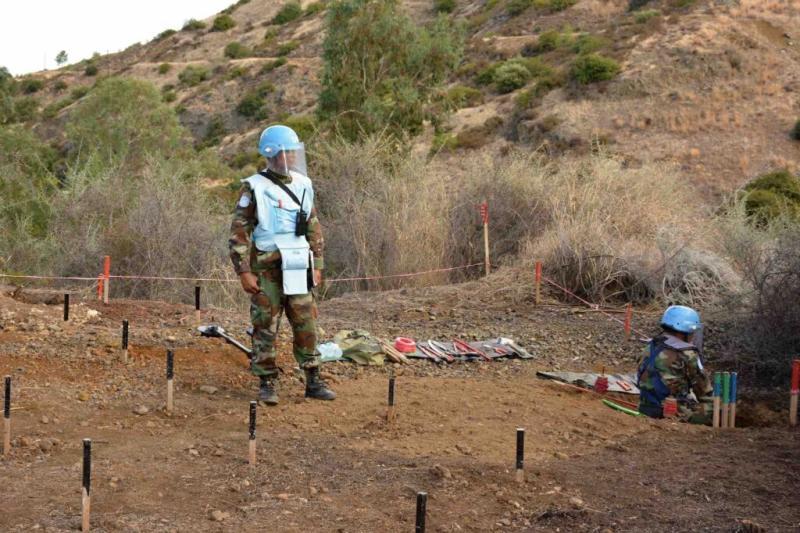
The Cambodian peacekeepers have had a long history of mine clearance in their own country. In mid-1992 the Cambodian Mine Action Centre (CMAC) was created and operated under the UN Transitional Authority in Cambodia (UNTAC) to implement and co-ordinate demining efforts in Cambodia. CMAC now continues its activities as a full-fledged Cambodian institution, running activities which include an extensive public awareness programme utilising mass media, mine marking, mine clearance, and mine clearance training. The painstaking efforts of mine clearance that began about two decades ago have freed more than 700 square kilometres of land from landmines and explosive remnants of war. By 2011, the number of landmine casualties had been substantially reduced. The casualty number then stood at 211, a dramatic decrease compared to peak number of 4,320 in 1996. The United Nations Development Programme (UNDP) has been working closely with the Cambodian Mine Action and Victim Assistance Authority (CMAA) and other development partners to tackle the remaining challenges. This long-standing partnership has resulted in a wide range of achievements, but despite these achievements, threats posed landmines and explosive remnants of war continue to persist in Cambodia. In affected areas, farmers can be found working on land that may be still littered with these deadly weapons. Children walk to school and may not know what lies in the ground in their path.
The expertise of the CMAA mine clearance specialists have been fully utilised by UNMAS operations around the globe.
However, tensions between the Greek and Turkish Cypriot states remain a barrier to making the entire island safe. The full extent of mine contamination in areas controlled by Turkish forces is still not known. In 2017, Turkish forces rejected the request made by UNFICYP to clear a small portion of land around one of its permanently manned positions in the buffer zone adjacent to the Deryneia/Derinya minefield for “safety reasons.”
A January 2018 report of the UN Secretary General, noted the completion of the outstanding non-technical surveys from the list of 28 legacy minefields and also the comprehensive review of the UNFICYP mine action database. However, it was also observed that the “two sides have not begun clearance of the four known remaining minefields in the buffer zone” and that no additional areas had been released for survey or clearance at that time.
In December 2019, UNFICYP announced the clearance of nine suspected hazardous areas each on both sides of the island, amounting to a total area of 210,882 square metres. This confidence-building measure was agreed upon by the leaders of both the Greek Cypriot and Turkish Cypriot states on 26 February 2019 as part of their commitment towards a mine-free Cyprus.
“We are thankful for the professionalism and dedication demonstrated by both sides in speedily clearing these 18 locations while adhering to International Mine Action Standards, as checked and approved by the United Nations Mine Action Service (UNMAS). The achievement of this confidence-building measure underlines the importance of dialogue, trust and co-operation for an enduring peace across Cyprus,” said Special Representative of the UN Secretary General/Head of UNFICYP, Elizabeth Spehar.
To date UNFICYP data indicates there are at least 54 “suspected hazardous areas” that require survey to assess whether clearance is needed; more than 2.6 million square metres of land may be contaminated with an estimate of more than 7,000 mines.

